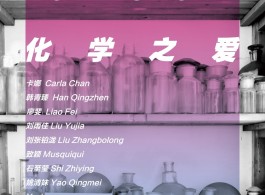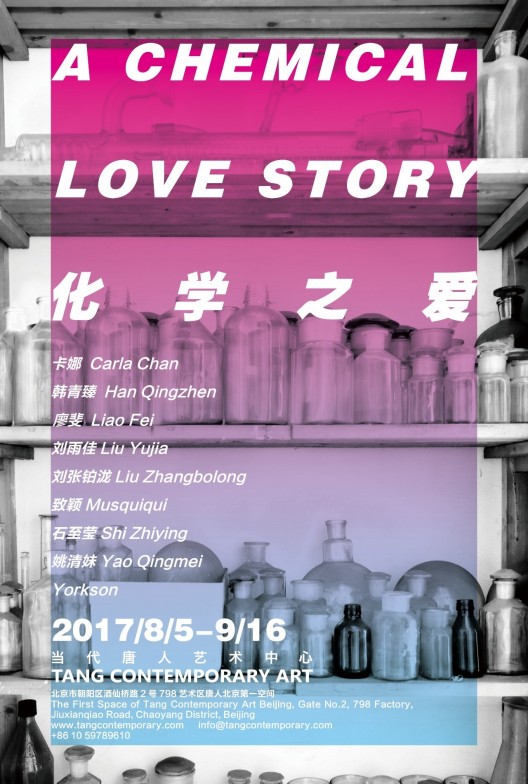Artists:
Carla Chan, Han Qingzhen, Liao Fei, Liu Yujia, Liu Zhangbolong, Musquiqui, Shi Zhiying, Yao Qingmei, Yorkson
Exhibition Dates: August 5 – September 16, 2017
Location: The first space of Tang Contemporary Art Beijing
Opening Reception: 4pm, Saturday, August 5, 2017
The exhibition title “A Chemical Love Story” comes from PiHKAL: A Chemical Love Story, a book about psychedelic drugs.
Through chemical compounds, we can overcome the self, permitting unreality to circumvent the retinas and sensory organs and move directly into the cerebral cortex. The senses become heightened, and the sense of rhythm in the body becomes more intense. These drugs often have serious side effects, but people are still entertained by them. All of humanity’s inventions are intended to liberate the body; they are an external way of banishing humanity’s lazy or greedy instincts. In contrast, drugs use chemical reactions with the blood stream to “exile” the mind and body, which puts the user at a moral disadvantage. You are doing obvious harm to yourself, and possibly because the pleasure of this act is limited to the individual, a communal social system is unable to accept this form of self-consumption and self-exile.
In the outside world, digital technology is another product that intervenes inmodels of social behavior from the outside. In contrast to drugs, technology must arrive at the brain through the senses before it can create a virtual world. However, it also produces collective need in a Keynesian mode, influencing the entire social group and creating a collective delusion, typically represented by social media platforms. Most of the time, this behavior seems rather stupid, but stupidity is not fatal. In a half-closed social system, even if they don’t use a VPN, people can still “freestyle”, baring their souls onsocial media platforms; this even includes the real, modern phenomenon of young cyber-nationalists commenting on Facebook. In all of the common, superficial “brainwashing” models, collectivism produces delusion; even if we know that these delusions are false, we must force ourselves to believe, resisting ourown weakness.
Artists must also conform to this collective delusion: one of the artists’ tasks is to create delusions, whether they are the delusions of collectivism and the delusions of internationalism, or the delusions of activism and the delusions of political correctness… Artists today have far greater ability to produce delusions than their predecessors did. Although the inability to confirm that point is the result of technical skill or great insight, it is obvious that the youngest generation of artists needs delusion more. The entire artistic system needs a dream factory to produce delusions; an international delusion that incorporates the taste of dust on a street in Beijing or the smell of washing powder in a lane in Shanghai has swept up third-tier cities in delusions of success that have immense attractive pull. Individuals within the “serious” artindustry, who despise every part of it, generally retain different proportions of self-confidence and self-deprecation as they continue to work for that delusion. Art today is like a psychedelic drug; it has become anintrinsic need without a sense of morality.
Text / Bian Ka




